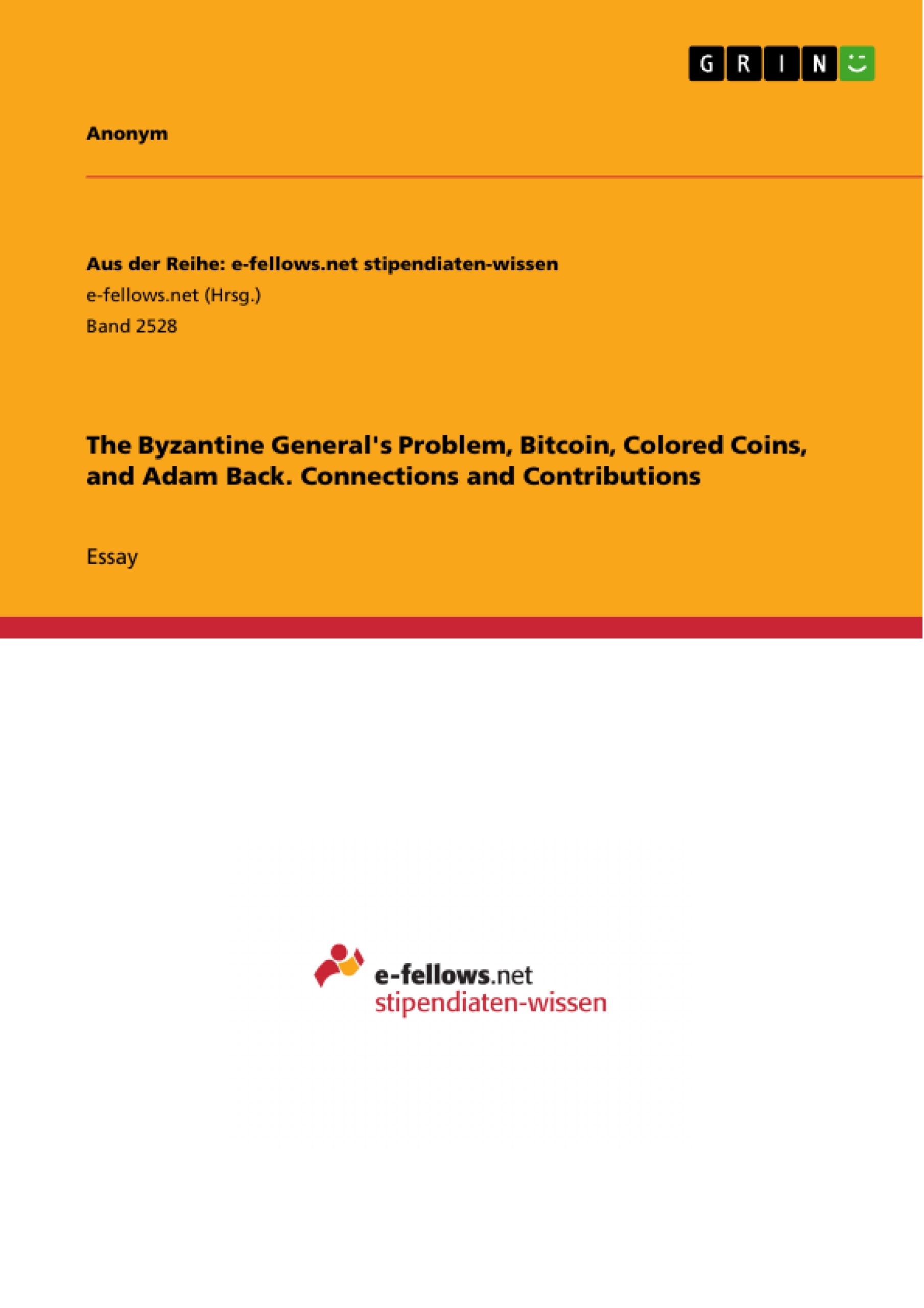This seminar paper discusses the Byzantine General's Problem and its relation to Bitcoin. In this problem, an army is surrounding an enemy city with various separated camps, which have to communicate with each other in order to agree on an attack strategy. There are unknown traitors among this army who can corrupt the message exchange and thwart consensus. The generals of the separated camps have to agree on a strategy. However, there are loyal troops/generals and disloyal traitors who can corrupt the message. The problem they are facing is how they can find out which message is true. If they do not have a solution they also do not come to a consensus and the traitor wins the battle.
Inhaltsverzeichnis (Table of Contents)
- The Byzantine General's Problem and its relation to bitcoin
- The Byzantine General's Problem
- Example:
- Relation to Bitcoin
- What are colored coins?
- Examples
- Explanation of Adam Back's contribution to bitcoin, discussion of his creation of proof-of-work coding functions and hash-cash
- Adam Back's contribution to bitcoin, proof-of-work and hash-cash
Zielsetzung und Themenschwerpunkte (Objectives and Key Themes)
This text explores the relationship between the Byzantine General's Problem and the Bitcoin blockchain, examining how Bitcoin's technology can address challenges related to distributed consensus and secure communication. The text also delves into the concept of colored coins and their potential to revolutionize asset trading and ownership.
- The Byzantine General's Problem and its application to secure communication and consensus in distributed systems
- The role of Bitcoin's blockchain in solving the Byzantine General's Problem
- The concept of colored coins and their potential to enhance asset trading and ownership
- The contributions of Adam Back, including his work on proof-of-work and hash-cash
- The advantages and disadvantages of colored coins as a trading mechanism
Zusammenfassung der Kapitel (Chapter Summaries)
- The Byzantine General's Problem: This chapter introduces the classic Byzantine General's Problem, explaining its origins and the challenges it poses for achieving consensus in distributed systems. An example is provided to illustrate how communication breakdowns and malicious actors can undermine coordinated efforts.
- Relation to Bitcoin: This chapter explores how Bitcoin's blockchain technology can address the challenges presented by the Byzantine General's Problem. The text explains how Bitcoin's decentralized ledger and proof-of-work mechanism contribute to consensus-building and secure communication among participants.
- What are colored coins?: This chapter delves into the concept of colored coins, examining their origins and functionality. The text discusses how colored coins represent a method for adding metadata to the Bitcoin blockchain and their potential to facilitate asset trading, ownership, and information storage.
Schlüsselwörter (Keywords)
The key terms and concepts explored in this text include the Byzantine General's Problem, Bitcoin blockchain, distributed consensus, proof-of-work, hash-cash, colored coins, asset trading, ownership, transparency, immutability, and digital tokens.
- Arbeit zitieren
- Anonym (Autor:in), 2017, The Byzantine General's Problem, Bitcoin, Colored Coins, and Adam Back. Connections and Contributions, München, GRIN Verlag, https://www.grin.com/document/375158



